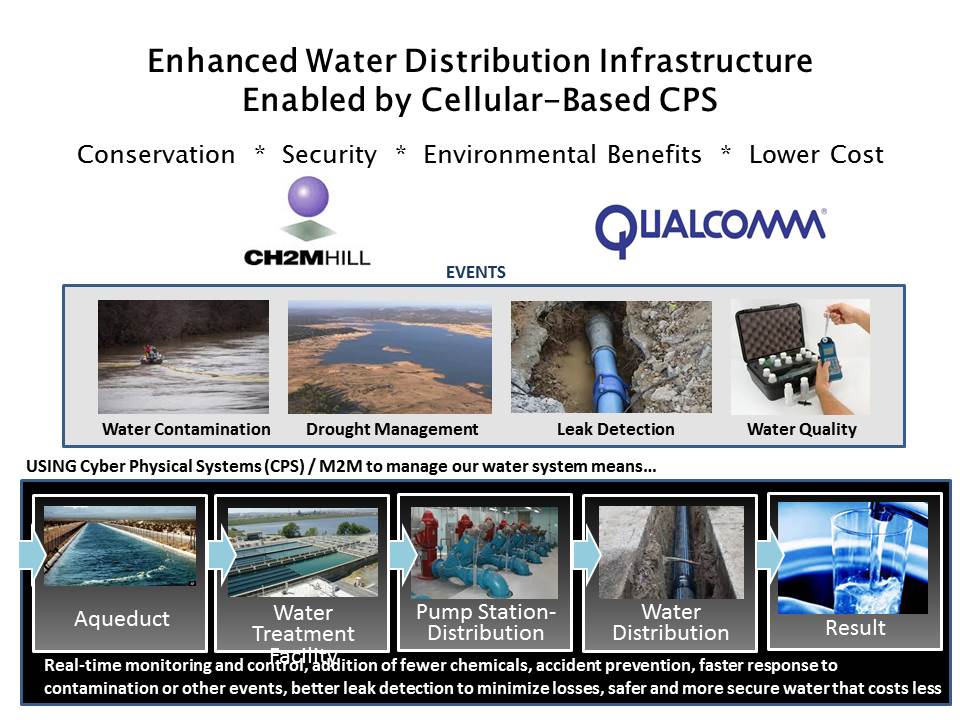Enhanced Water Distribution Infrastructure
 Smart Water Assets and sensors will fill a major gap currently existing in the water, wastewater & environmental industry effecting how utilities routinely collect, transmit, process, and create system and asset data. Equally important is how that data can be more effectively converted to “actionable” information for decision-making. Impacts to the environment will be reduced (e.g., sewage overflows into homes, businesses, rivers and lakes), public safety will be enhanced through integration of security technology and procedures, and utility rate increases will be reduced through operational savings (e.g., regulatory compliance penalties, energy, chemicals). Additionally, labor will be refocused to allow utilities to use their highly skilled labor force for more meaningful uses.
Smart Water Assets and sensors will fill a major gap currently existing in the water, wastewater & environmental industry effecting how utilities routinely collect, transmit, process, and create system and asset data. Equally important is how that data can be more effectively converted to “actionable” information for decision-making. Impacts to the environment will be reduced (e.g., sewage overflows into homes, businesses, rivers and lakes), public safety will be enhanced through integration of security technology and procedures, and utility rate increases will be reduced through operational savings (e.g., regulatory compliance penalties, energy, chemicals). Additionally, labor will be refocused to allow utilities to use their highly skilled labor force for more meaningful uses.
Smart Water Assets will also provide systems and tools to mitigate situations that utilities have struggled to proactively address in the past. For example, based on the recent events on the Elk River in West Virginia, it is evident that there is an urgent need for smart technologies (water quality monitoring in this case), big data analytics, early alerting, and proven response protocols to enable utilities to make timely and well informed decisions during unusual situations.
In addition, Smart Assets will mitigate longstanding challenges that are becoming more urgent, such as optimizing the use of limited water resources during drought management through the reduction of water loss associated with leaking pipes, theft, and other unplanned uses.
Team Lead
- Jason Ellis, QUALCOMM
- Qualcomm
- CH2M Hill
